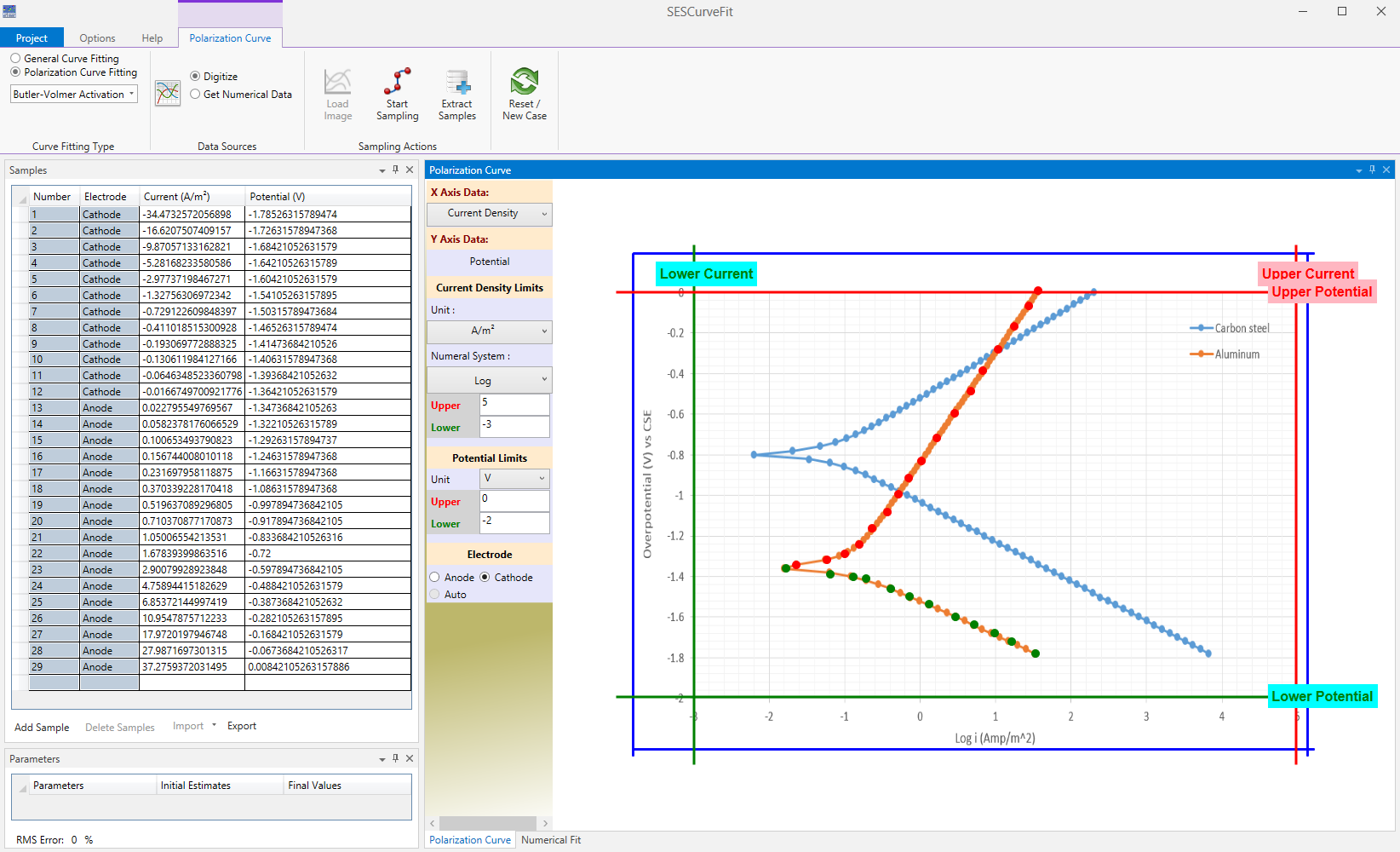SES Curve Fitting Application
SESCurveFit is normally used in conjunction with the CorrCAD software package to obtain a polarization curve model from experimental corrosion polarization data. It is also a digitizer.
Technical Description
SESCurveFit employs state-of-the-art engineering optimization methods to obtain a polarization curve from experimental data. The polarization curve can then be used within the CorrCAD software package for the characterization of electrochemical corrosion processes in buried and immersed metallic conductor networks, so as to prevent and protect metallic utilities such as gas pipeline and electrical utility assets from being jeopardized by corrosion.

SESCurveFit can also be used as a general curve fitting application in order to build mathematical models from experimental data.
Technical Highlights
SESCurveFit consists of two integrated software tools. A digitizer and a specialized curve fitting utility. SESCurveFit can:
-
Directly import the numerical values of your experimental polarization data.
-
Extract polarization data samples from images containing graphs of polarization data or polarization curves using SESCurveFit’s built-in Digitization tool.
SESCurveFit has four curve fitting options available:
-
The nonlinear Butler-Volmer Activation Polarization Model, which employs nonlinear least-squares to determine the four parameters that control the model, namely the corrosion current density, the equilibrium potential, the anodic Tafel slope and the cathodic Tafel slope.
-
The nonlinear Butler-Volmer Concentration Polarization Model, which employs nonlinear least-squares to determine the five parameters that control the model, namely the corrosion current density, the equilibrium potential, the anodic Tafel slope, the cathodic Tafel slope, and the limiting current density.
-
The Polynomial Polarization Model, which uses linear least-squares to determine the coefficients of the polynomial model.
-
The Look-up Table Polarization Model that uses linear interpolation to determine the value of the polarization between two consecutive polarization data samples.


